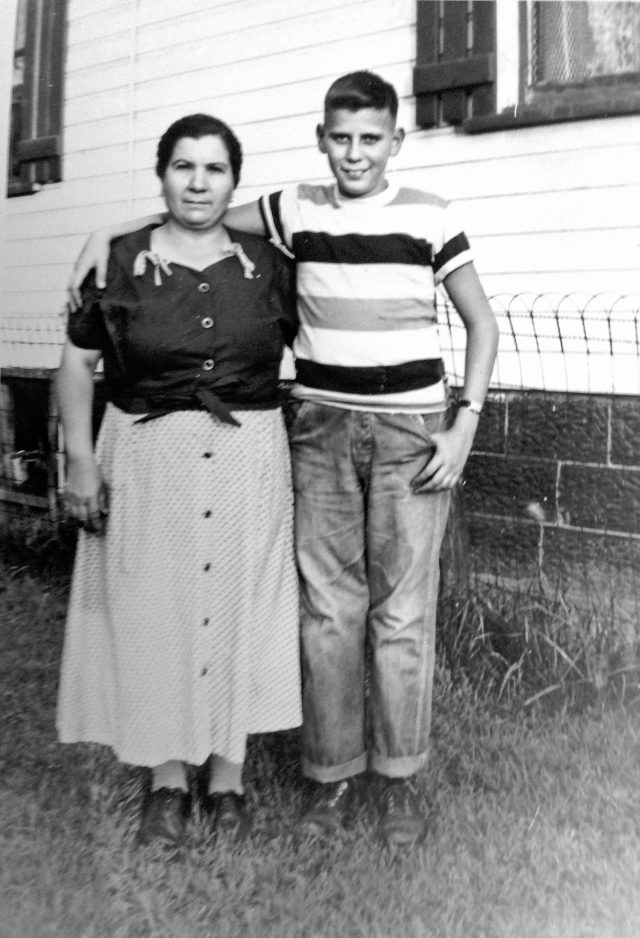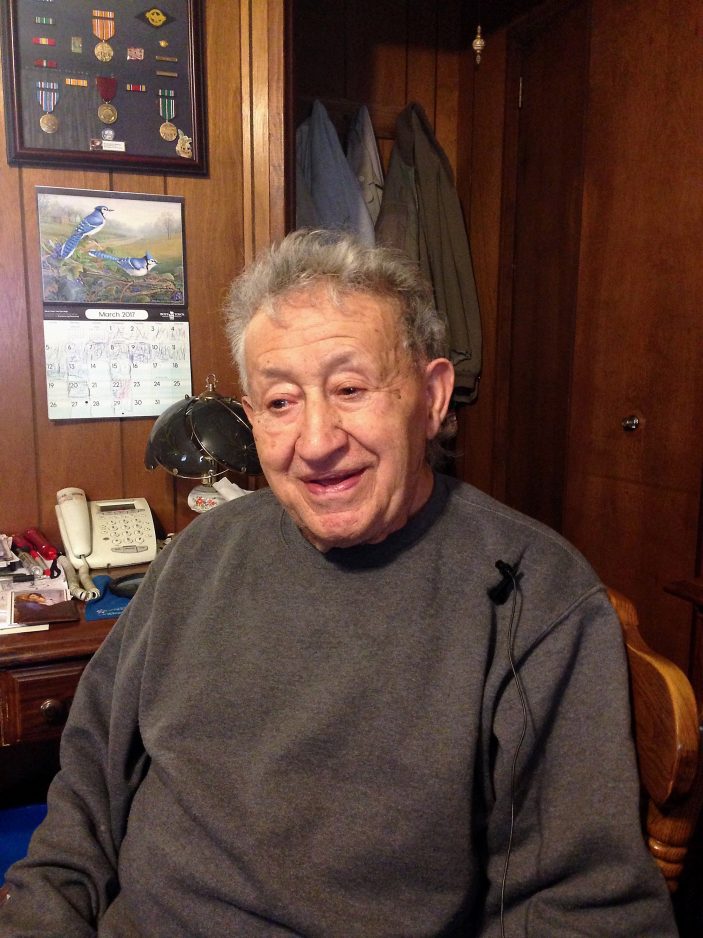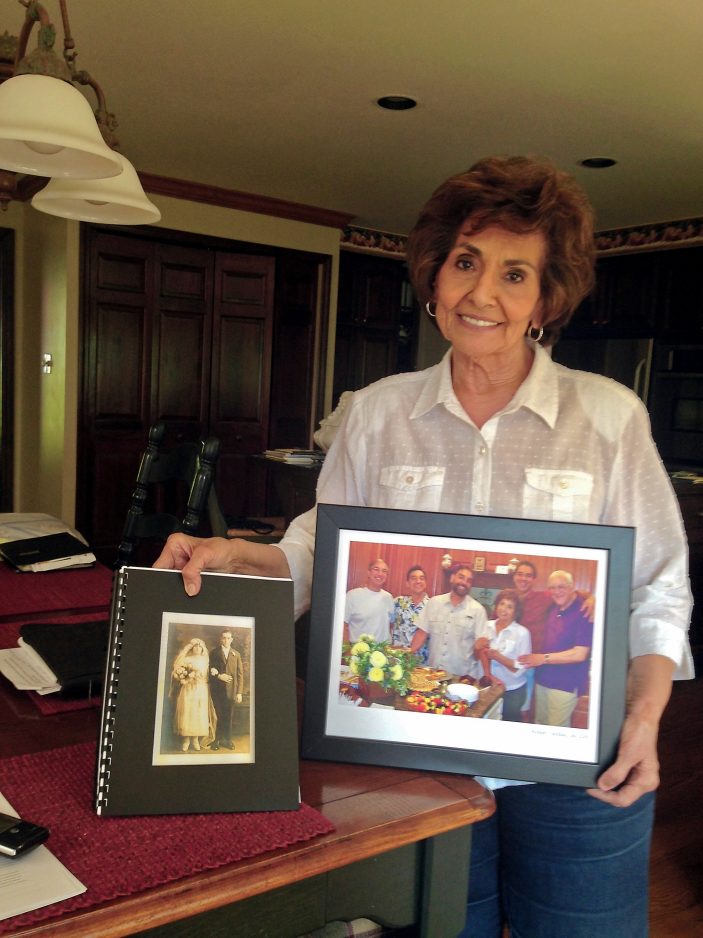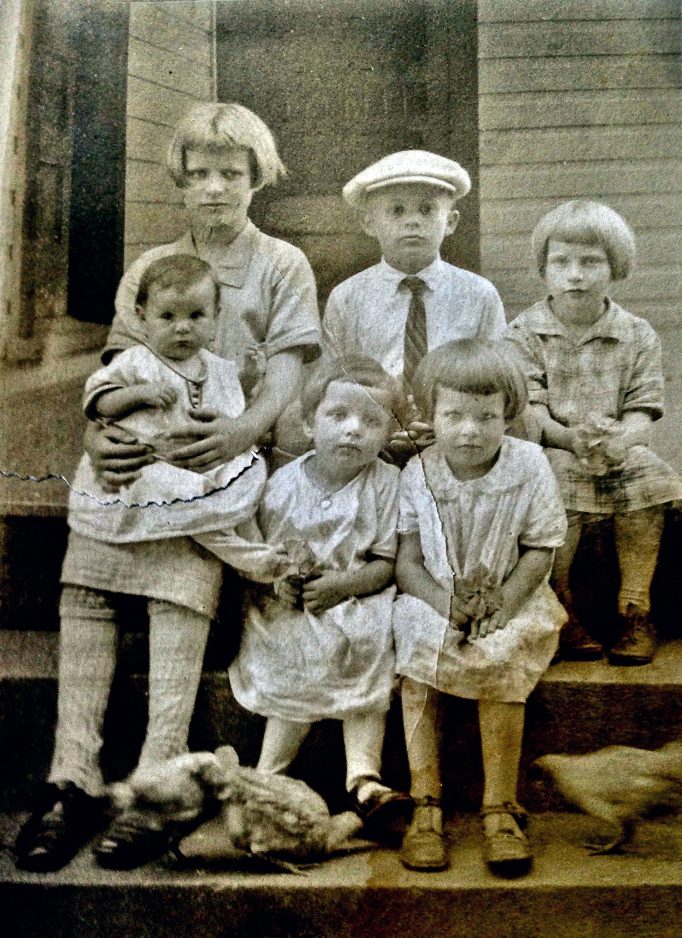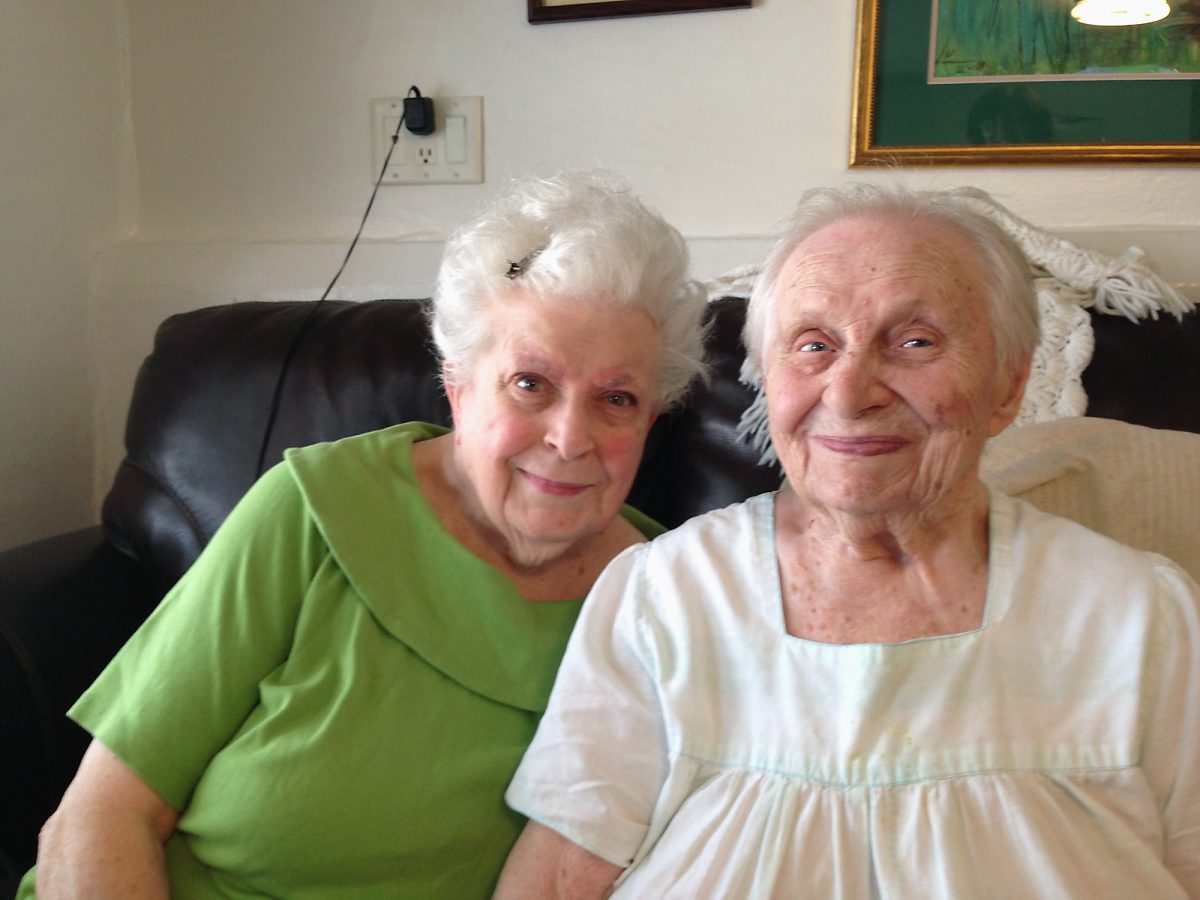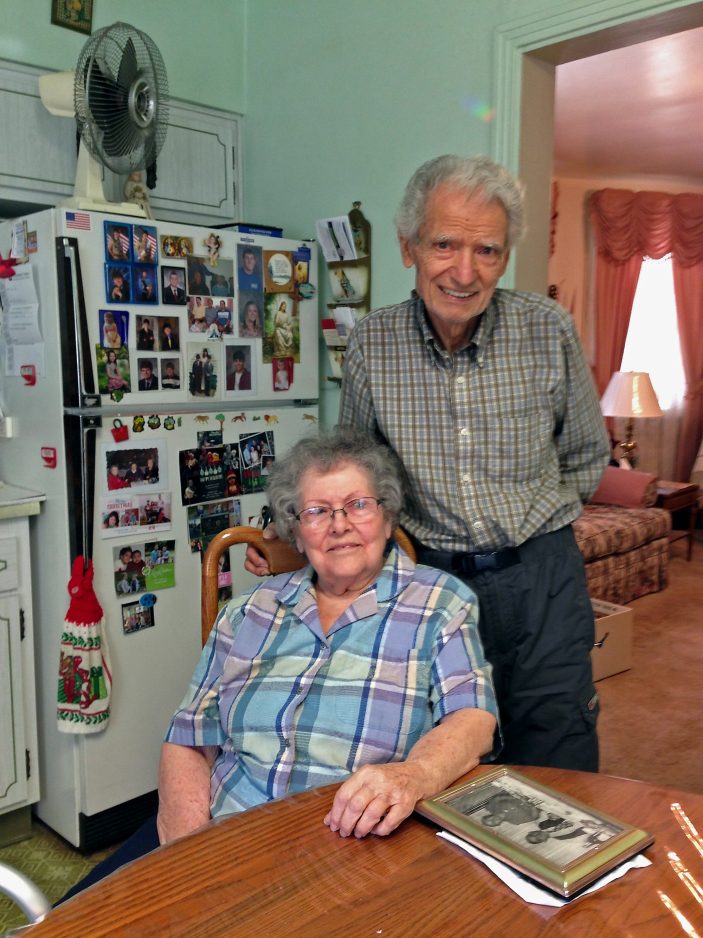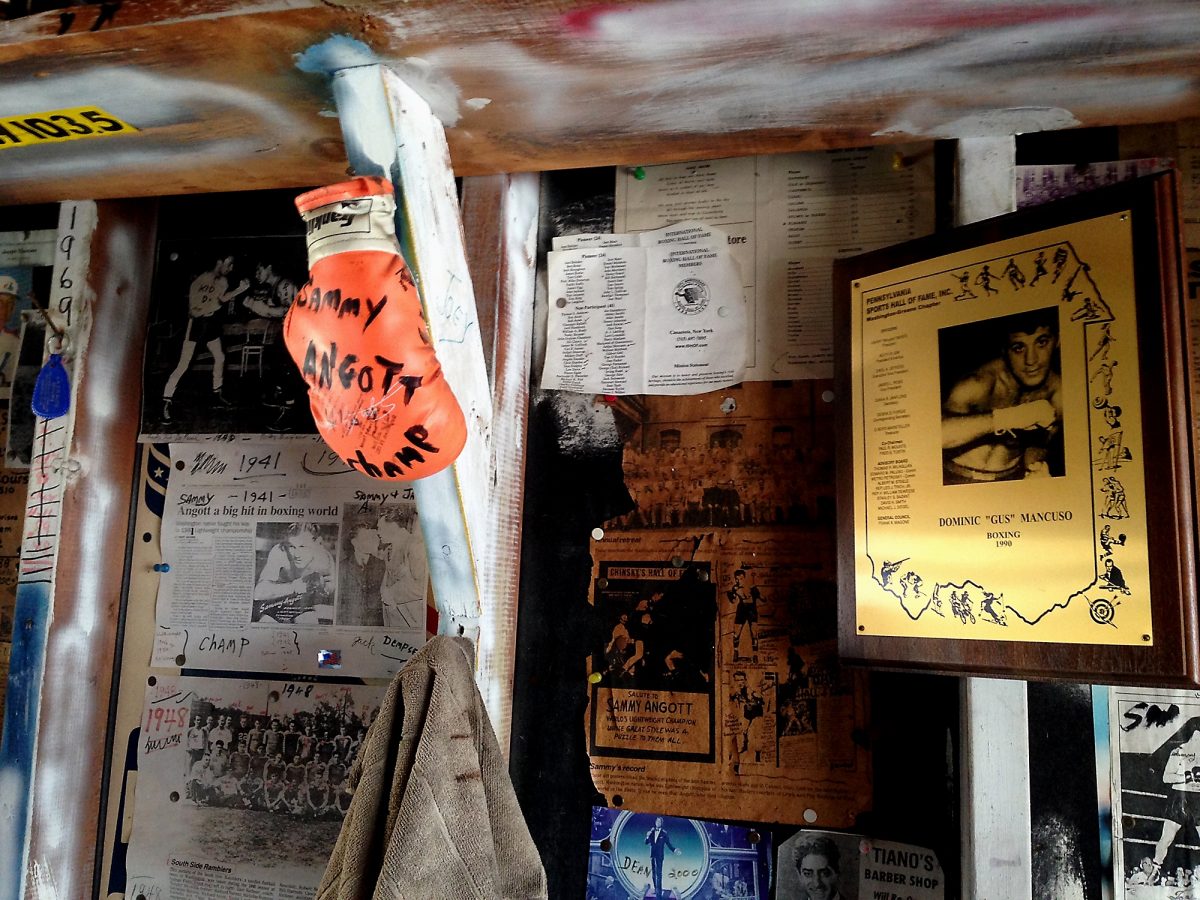Slices of life Collecting the stories of Washington’s first Italian families
Around 1906, brothers Santo and James Alfano literally found themselves at the end of the line when the Rhode Island-based railroad they worked for ran out of money in Washington.
They looked around, saw that the city had a thriving economy, and decided to stay. To establish themselves as new Americans, they changed their name to “West” after the area of the city where they settled – and eventually become patriarchs of one of the largest and well-known families in town.
In the 1920s and 1930s, Giuseppe and Letizia Aloia provided a livelihood for their family with a farm in the south end of the city. Older sisters cared for younger siblings while their parents and older brothers tended the garden and livestock. Giuseppe sold vegetables and meat all over town, including among the stately homes of East Washington. Although Italian immigrants did not live in that neighborhood, the Aloias’ quality goods were welcome.
These stories are among the many “slices of life” descendants of Washington’s first Italian immigrants are recording for the Italian Heritage Collection at the Hood Local History Center of Citizens Library.
Almost every week since the beginning of this year, I have traveled a well-worn path from the Highland Park neighborhood of Pittsburgh to my hometown of Washington to record the oral histories of families who, like mine, were among the first Italians to settle in the city.
When complete, the Italian Heritage Collection also will include photos, documents, books and other materials related to migration to the city between 1880 and 1930. During those years, Italians became the largest ethnic group in the city.
The 13 oral histories that have been recorded so far capture how these immigrants faced their challenges and strove to become part of the fabric of the community. They were the “dreamers” of their era.
Here is a sample of their stories:
Angelo Passalacqua (born in 1888) saw his wife and children only on Sundays while he tried to establish a bar business on Wylie Avenue in Washington in the 1930s. He wanted to be sure he would be successful before he relocated Giacomina and their five sons and daughters from the North Side of Pittsburgh. Angelo not only learned to run a bar, but turned it into West Chestnut Spaghetti House, which after his death in the 1950s was renamed “Angelo’s Restaurant,” the forerunner of the family-owned restaurant that continues to this day. Angelo’s son, Silvio, 87, now retired and serving as a commissioner for North Franklin Township, recalls his father’s ceaseless work ethic.
“I don’t know how my father did all that he did,” Silvio said.
Respect for the hardiness of the immigrant generation also was noted by Theresa (Betty) Sonson Powers, whose father, Frank (born in 1892), had to leave school in fourth grade to help in the family’s produce business. In 1907, at age 15, Frank established his own grocery store on Chestnut Street, only to lose it in the Great Depression of the 1930s. Out of work, he pursued employment as far away as West Virginia to support his family. “He did whatever was necessary,” said Theresa, 85. “He never gave up.”
Annibale Trapuzzano (born 1887) and his brother, Theodore, arrived in the United States around 1906 armed with tailoring skills they had learned in an Italian orphanage. Hearing that Washington needed tailors, they moved here, started a shop on the second floor of a Main Street building, and launched a dynasty of Trapuzzano tailors.
“They were perfectionists,” said Annibale’s son, Amon Trapuzzano, 84, a retired industrial designer. “They could take a piece of material and make a beautiful suit. I could never reach the level of perfection they did.”
Walking as a primary means of getting around was recalled by many sons and daughters of immigrants. Mary Aloia, 97, said she became so weary of walking the mile and a half from the south end of town to Washington High School that she dropped out before her junior year.
But for Flo Nicolella, 89, all that walking was a plus. She recalls that her family home near East Maiden Street was a “way station” for friends and relatives walking in many directions. Her mother Angelina’s cooking was a big draw. To this day, Flo prefers people to drop by rather than calling to set up a visit. “I like surprises,” she said.
Mary and Sally Aloia’s family home is that kind of magnet today. Their numerous nieces and nephews often stop in for lunch or dinner without calling.
“We want them to come,” said Sally, 82, who prepares delicious Italian meals every day. Their visitors step into the past when they walk in, smell the aromas and hear the sisters speaking Italian to each other.
Large families were the norm in those days. Many of the oral historians talk about how they and their siblings pulled together to farm, run a business and help their mothers manage the family home.
Several of the families ran small groceries, including the Oliverios, Wests and Veltris. Pete Veltri, the oldest son of Italian immigrants, branched off to found a dry-cleaning business that continues to this day. The entire family worked together to ensure its success, said his sister, Ginny Veltri Adamsky, 79. That commitment was only part of the success, she added. The other part was her family’s warmth.
“The Veltris are people people,” she said.
Traditional gender roles prevailed in the immigrant families. Fathers were the rule and mothers were the heart. Frank Insana, 91, who grew up on South Street, easily recalls his father’s strictness, which always kept him in line.
Ginny Veltri Adamsky can still hear the shrill whistle her father sounded to beckon her and her siblings to come in from playing. “We all came running,” she said. “If it was a long whistle, he was mad.”
Joe Mancuso, 96, of Tylerdale, confides that he gets a little lonely as one of the oldest of his generation of Italian Americans. He remembers the heyday of his Italian neighborhood with pride. Some years ago, he converted a detached garage into a veritable hall of fame of Italian achievers, such as his brother, Gus, a boxer. For years, old friends pulled up chairs in the memorabilia room to shoot the breeze.
Joe, who served in the Navy in World War II and the Korean War, is one of several who speak proudly of their military service. Army veteran Frank Mancuso, 91, (a distant relative) is another. He entertained troops in Europe as a member of the USO Third Army Special Services Rodeo. Growing up, Frank learned to rope and ride at the rodeo that was held where Washington Crown Center now stands.
No history of Washington’s Italian Americans is complete without noting the community’s warm regard for two of the city’s first Italian-American medical doctors. Although born in Westmoreland County, Charles Tripoli, 87, and the late Wilson Pizzi, who was born in 1918 in Fayette County, chose Washington to practice. Their arrival meant that Italian patients could be understood in their native language. The family histories of both doctors have been recorded for the Italian Heritage Collection at Citizens Library.


